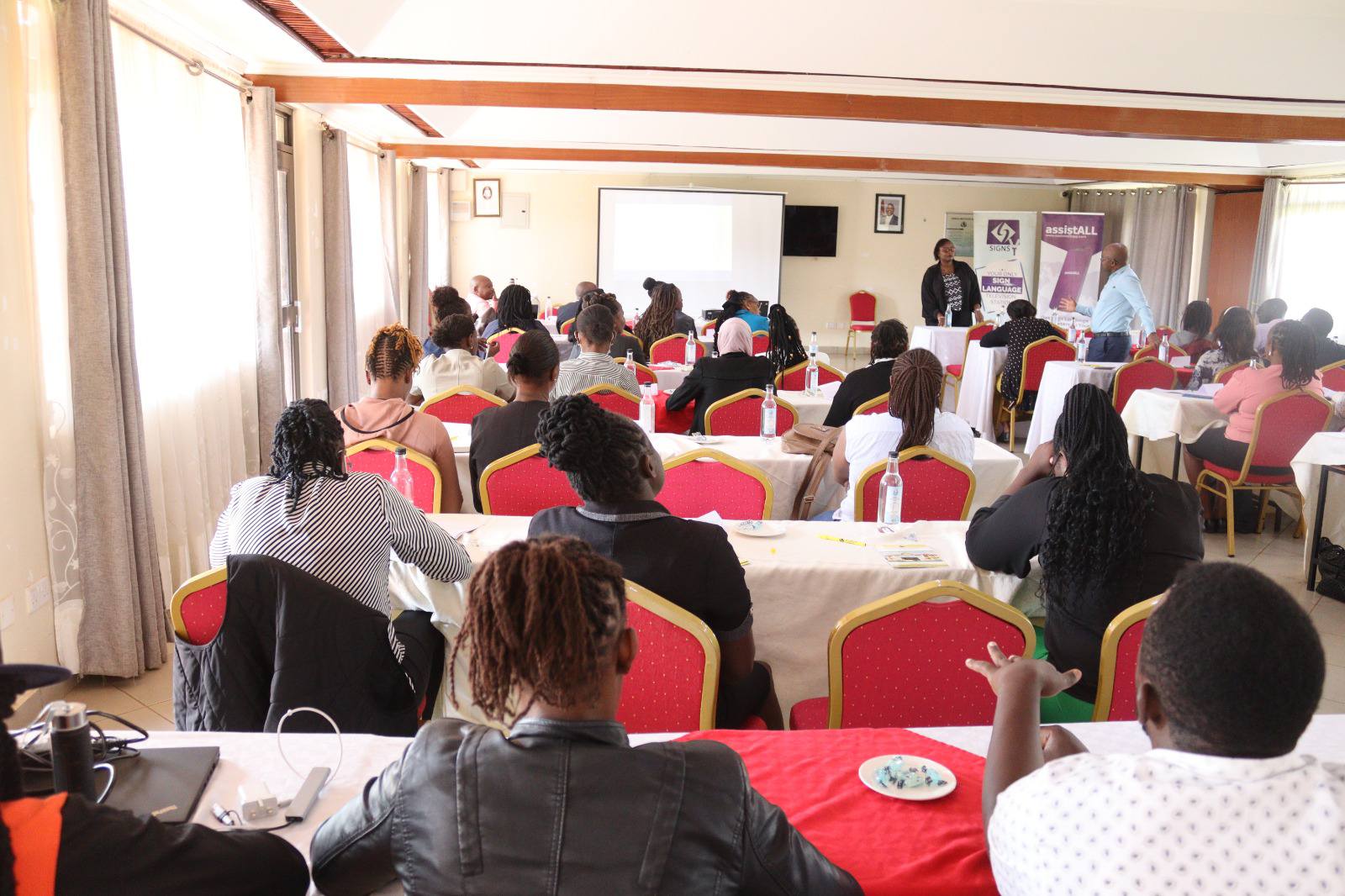Understanding and responding to the stress and impact of COVID-19 upon assistive Technology services by David Banes
Access to AT is a right, which enables access to employment, education, and all aspects of daily life. Delivering this is not a one-off intervention in most cases, and this is reflected in the 5P’s (People, Products, Provision, Personnel and Policy) developed by the World Health Organization and in the AT ecosystem that I have previously described. That ecosystem includes key functions of AT services that are necessary for successful implementation and maintenance of assistive and accessible technologies. These include Advice, Assessment, Provision, Training and Support, alongside a wider framework or “wrapper” of accessible content, research, and policy.
Over the past six months the capacity of AT systems to address the needs of a given population have been tested and whilst it is easy to account for the failings of systems as being the result by extreme and acute conditions, the systems themselves were already experiencing pressures that were placing great strain upon capacity and capability.
At this point, and looking ahead, it is important to seek to understand the historic and current stress on AT services and to suggest those services that have proven sufficiently resilient to resist potential ill effects upon the lives of people with a disability.
The pre-existing trends and historic strain upon systems can broadly be divided into three aspects.
Demographics (increasing numbers of people needing assistive technologies caused by aging and improved health care)
Economics (The strain on the public purse of delivering AT greater numbers of those in need, with other significant calls upon public expenditure occurring)
Aspirations (changing customer expectations of services and delivery as a result of disruptive innovation and technologies)
As a result, three broad models of delivery have evolved that are mutually supportive and require the skills, knowledge, and experience of professionals to contribute in new ways. These models of delivery are closely related and in practice are often blended and integrated establishing an approach which allows for breadth (numbers of people impacted) and depth (quality of impact on individuals) to meeting needs. Increasingly clients have demonstrated capability to support themselves through the availability of self-help resources (from making choices of AT, to repair manuals and instructions, and including on demand virtual training). Where this approach is insufficient to address the need, we observe increasing levels of professional interaction applied to the case, initially to guide and advise the client through interventions using a telephone or internet connection, and ultimately applying a fully intensive intervention with shared physical presence at a clinic, workplace or the clients home.
The strains identified that have been placed on services have led to attempts to facilitate and innovate approaches that can be delivered within available resources to increasing numbers of people, whilst maintaining the option for more intensive approaches as and when required. However, the sudden increased stress on systems created by the Covid pandemic offers the opportunity to consider the capacity of systems to cope with acute change, and to respond to such disruption to mitigate impact by judging the resilience of services. By adopting a resiliency model to analysis of service delivery during Covid, we can learn much about building stable, flexible services that can respond to range of steady or intense stress in the future.
In order to gauge the success of services during the pandemic and the effectiveness and efficiency of current policy and practice related to provision of AT there are a series of key stress factors that might be created or associated with government response to protecting public health. In different countries we have observed closure of public spaces and schools, increased home working, and reduced public transport. These create pain points in the system, and we can analyse the user journey through provision suggesting a common framework of “milestones” which enables consideration of the degree of pressure and strain placed upon each any system at each point, from minimal (little impact) to high (system breaks down).
In other sectors, including finance, such stress testing often seeks to analyse scenarios, by identifying relevant scenarios for AT services such as access to repair facilities, capacity to continue to work during a lockdown or access to professional advice a working model of related fields can be established and investigated. Each scenario can be evaluated both prior to and following the application of the “stress” of Covid-19.
The extent to which services can maintain capacity and capability is likely to be related to key concepts used to define resilience within systems including:
Resistance – the ability to withstand possible hazards
Absorbance – the capacity of the system to limit the damage incurred during an event
Recovery – the ability for the system to return to its original state following an event
Adaptation – the system’s ability to change to maintain its function in a new environment
These concepts can provide a means to consider resilience within AT delivery systems. In addition, some definitions of resilience extend and apply the concept to both planning (anticipation or design) and improvement (transformation or growth).
To gauge the level of resilience in the AT ecosystem, Covid-19 can be viewed a real world stress test and our analysis could be used to:
Determine breaking points of existing systems or usage limitations
Confirm a model to predict breaking points or safe usage limits related to other forms of stress
Confirm intended specifications and outcomes are being delivered
Determine modes of failure (how exactly a system fails)
Test stable operations of a part or system outside standard usage to inform planning.
The perception of stakeholders as key informants is crucial in seeking to understand both the system and the breaking points within that system, those seeking to evaluate resilience of delivery are seeking to:
Review the effectiveness of provision and practice prior to the pandemic,
Identify the stress factors for each country, based upon the actions taken by government and
Compare the effectiveness of provision before and after the pandemic.
Such an approach would examine the extent by which the potential pain points were realised, and then resulted in a loss of service or access from the perspective of the intended recipients of services, alongside any perceptions of professionals. The insight offered by persons with disabilities to understand the changes they found to be most significant, both positive and negative, will help understand the impact of the stress elements and to consider which mitigations, (tools and resources and changes in behavior) that were employed to ensure continuity.
A comparative approach examining the delivery services and models within a community, and the capacity of each to maintain service during the crisis will identify shared factors across weak systems, and those factors that contributed to more resilient and maintained services.
It is perhaps not too early to begin gathering such data and undertaking analysis. The impact of the crisis has been both immediate and obvious in many cases. Anecdotal evidence offered through professional networks and social media appears to suggest that those services which had previously invested in self-help and remote virtual models were most able to weather the storm of Covid. Those that had already begun to respond to pre-existing stress and strain within their ecosystem had greater capability to address and respond to the volatility created by the public health crisis. Shifting capacity and resources within the three forms of service delivery may have been much easier when teams and users of services were familiar and confident with each.
We have already gathered insight into the reality of the fragility of systems. By collaborating to adopt a service resiliency approach offering a framework for analysis leading to clarity of the factors that services to operate that can influence future planning may help ensure that the experience of recent months is fully understood, and that we create and deliver approaches to services that are not only effective and efficient today, but strong enough to cope with what tomorrow brings.
Perhaps the most critical consideration in taking a resilience approach to understanding the impact of Covid-19 is that it does not limit our thinking to the current pandemic. By building the model we can add potential stresses into the system and identify where systems would break down and adjust our thinking accordingly. Such an approach will help us withstand whatever the next crisis might be, such as, climate change, conflict, or economic downturn. What we have learned, is that if we do not anticipate and plan for disaster, the impact will be much greater than necessary.
Tags: Assistive Technology
Related
Share this article
Unregistered Staff and Guest Writers: This account will no longer post articles. We appreciate your past engagement and invite you to stay connected with us!
View articles

